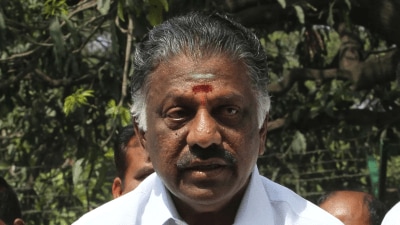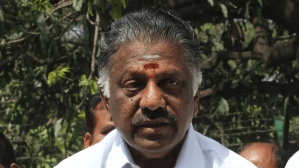Justice P N Bhagwati: The man who gave us and ‘nurtured’ the PIL
The seventh death anniversary of Justice P N Bhagwati last month virtually went unnoticed throughout the country. Justice Bhagwati was a constitutional czar. He made rich contribution to constitutional jurisprudence. Also to constitutionalism. He can never be forgotten from Indian constitutional map. Justice Bhagwati was born on December 21, 1921. He was brilliant in mathematics. […]
 Justice Bhagwati started his practice in the Bombay High Court in June 1948. He joined the chamber of legendary Sir Jamshedji Kanga. Homi Seervai and Nani Palkhivala were also in Kanga’s chamber. (Express Photo)
Justice Bhagwati started his practice in the Bombay High Court in June 1948. He joined the chamber of legendary Sir Jamshedji Kanga. Homi Seervai and Nani Palkhivala were also in Kanga’s chamber. (Express Photo)The seventh death anniversary of Justice P N Bhagwati last month virtually went unnoticed throughout the country. Justice Bhagwati was a constitutional czar. He made rich contribution to constitutional jurisprudence. Also to constitutionalism. He can never be forgotten from Indian constitutional map.
Justice Bhagwati was born on December 21, 1921. He was brilliant in mathematics. He joined MA mathematics. He was in the second year when his father became a judge of the Bombay High Court. He quit mathematics, pursued law and became a lawyer.
Justice Bhagwati started his practice in the Bombay High Court in June 1948. He joined the chamber of legendary Sir Jamshedji Kanga. Homi Seervai and Nani Palkhivala were also in Kanga’s chamber. Soon, he began to build up his own lucrative practice. He was rubbing shoulders with seniors. He had sound knowledge of law. He was prepared thoroughly, skillful in presentation, very articulate with effective communication. Above all, he was always full of determination.
He was elevated as Judge of the Gujarat High Court in July 1960. He was only 38 then. Interestingly, he had put in only 12 years as an advocate. He became Chief Justice of the Gujarat High Court in 1967 at the age of 45. He was elevated to the Supreme Court on July 17, 1973. He became Chief Justice of India on July 12, 1985. He retired on December 20, 1986. His total tenure on the bench was 26 years and five months.
Justice Bhagwati was a social philosopher. For him, judicial review was a tool for bringing social change. He breathed life into law. He used the power of law to achieve social justice, to cover the uncovered areas of social justice. For Justice Bhagwati, law was not a dictum to be blindly followed by the courts, it was the duty of the courts to invest the words used by Parliament with meaning and content, to bring a living organism to meet the needs of a changing society.
Justice Bhagwati stands tall in his contribution to constitutional jurisprudence. He gave new dimension to Article 14 of the Constitution. He interpreted that any arbitrary action will necessarily be violative of the right to equality. He gave wholesome meaning to ‘Procedure’ Established by Law’ in Article 21. Overruling A KGopalan’s case (1950), he introduced ‘Due Procedure’ in place of any statutory procedure. The right to life does not mean mere existence or animal existence. It means to live with human dignity. It includes the enjoyment of human life. The doctrine ‘Promissory Estoppel’ was given juristic foundation. The executive was bound by its promise. One can go on. The list is long.
The most significant contribution of Justice Bhagwati relates to Public Interest Litigation (PIL) or Social Action Litigation (SAL). Justice Bhagwati wrote an article in which he openly said: “I fathered social action litigation in India. I gave birth to it with help from Justice Krishna Iyer and D A Desai. I nurtured it. When I became Chief Justice, I invented ‘epistolary jurisdiction’ accepting cases based on simple post cards to let justice reach the poor. I made mincemeat of locus standi as it was anathema to let justice reach the poor and underprivileged. And I was proud of it.”
PIL or SAL was the product of judicial activism. Large majority of people in India were poor and illiterate. They did not know their rights. They also could not afford the luxury of court litigation. In such petitions, the relevant material was not available.
Therefore, the Supreme Court specifically ruled that in exercise of powers granted by Articles 32 and 226, the courts can appoint Socio-Legal Commissions for the purpose of gathering the relevant material.
It was during 1978-1980, three great judges sat in the first three courtrooms of the Supreme Court. In Court No.1: Y V Chandrachud, Chief Justice. Court No. 2 was occupied by Justice Bhagwati, and Court No.3 by Justice Krishna Iyer. These three judges continue to be all-time great judges. They continue to be fondly remembered for their extraordinary contributions to the world of law.
Justice Bhagwati was a humble man. Those who dealt with him remember him – he never raised his voice at anyone, was not a bad-tempered person, he was always pleasant. He would never allow a senior to bully a junior, in fact, he would guide the juniors.
This does not mean that he was free from any failings. The Supreme Court failed the people during the Emergency. In 1980, the Congress was voted back to power. Justice Bhagwati wrote an open letter to Prime Minister Indira Gandhi congratulating her on her victory. The letter was openly discussed in academic circles.
He was in the Supreme Court for almost 13.5 years. Out of this, he remained the Chief Justice for one year and five months. He proved that one does not need to be Chief Justice for a long time to make a lasting contribution.
(The author is former Director of the National Judicial Academy and Professor Emeritus of Law)












